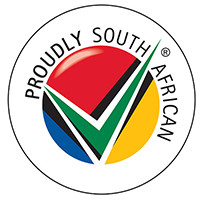A few months ago, we hosted a business forum focusing on the clothing, textile, leather and footwear sector, which, while once thriving, has been decimated over the years by the flood of cheap imported garments.
Thanks to a commitment to increased localisation by many of our major retailers, the clothing sector specifically is showing signs of a revival.
Our cotton industry is being re- established. Young designers are being given opportunities, and there is hope for the sector's continued upturn.
Now, as part of an import replacement programme on which we are working and where we are relying heavily on the DTI (Department of Trade and Industry) for support, we are looking at shoes.
The DTI sector classification rather quaintly includes "gaiters", but I think this is a segment on which we can safely allow the sun to set, as no one seems to know what gaiters are!
Here are some astonishing statistics on South Africa and our shoes, which seem to suggest that there is an Imelda Marcos in all of us.
In 2009 we collectively bought 260million pairs of shoes, of which we produced only 18million locally. Between April 2017 and March this year we imported shoes worth R3.3bn.
Thanks to ongoing DTI-led efforts to save the sector, the 18million pairs produced in 2009 rose last year to 75million, with an ambitious target set by the DTI of 100million pairs over the next year or so.
According to a report compiled by B&M Analysts as part of the research that contributed to a draft retail Clothing, Textiles, Footwear and Leather Masterplan that is scheduled for release by the DTI soon, the country�s footwear sector employs nearly 10000 people, with the capacity to support many more jobs if our retailers were to commit to procuring their footwear locally, as many have done with textiles and clothing.
A number of the local companies that are still in business are family- established enterprises that have been going for many years.
Some have also carved out a niche for themselves in safety and industrial protective footwear and shoes for the police and military.
One Proudly South African member company, Palm Footwear, specialises in school shoes.
Some have made names for themselves as bespoke hand crafters of fine shoes, in the old-fashioned way.
Shoe-making requires skills that we still have - the SA Footwear and Leather Export Council has about 150 members, but as its name suggests, they are all about accessing external markets.
Some of the supply-side lessons that have come out of the B&M Analysts' research include more support for skills development as well as a greater investment in the sector in general and in the upgrade of manufacturing facilities.
There is also a need for design and product development support, and in that design process we need to find a real value-chain differentiator that will allow our domestic shoe sector to thrive once again.
For example, we are a nation of takkie wearers.
We know there are young designers who are exploiting our love for this style, and designing and making cutting-edge canvas shoes.
We make sandals from our animal hides, our beautiful printed fabrics and many other materials, demonstrating our resourcefulness and creativity.
There is room for more.
I have to pay tribute in my customary song to HHP, who we lost so tragically last week.
The song is Bosso ke Mang who's the boss?
Well, we are the bosses of our own economy, and by producing and buying local we can take back the future direction of the local footwear industry.
In the same way as we have worked hard with retailers on clothes, we are starting the fight to promote local footwear.
With a market that has such a high demand, we are encouraging all local shoemakers to come and be part of the "buy local movement", and Proudly South African will support you every step of the way (pun intended!).
Watch the trends, be on point, concentrate on quality, and there is a market out there just waiting to be tapped.


